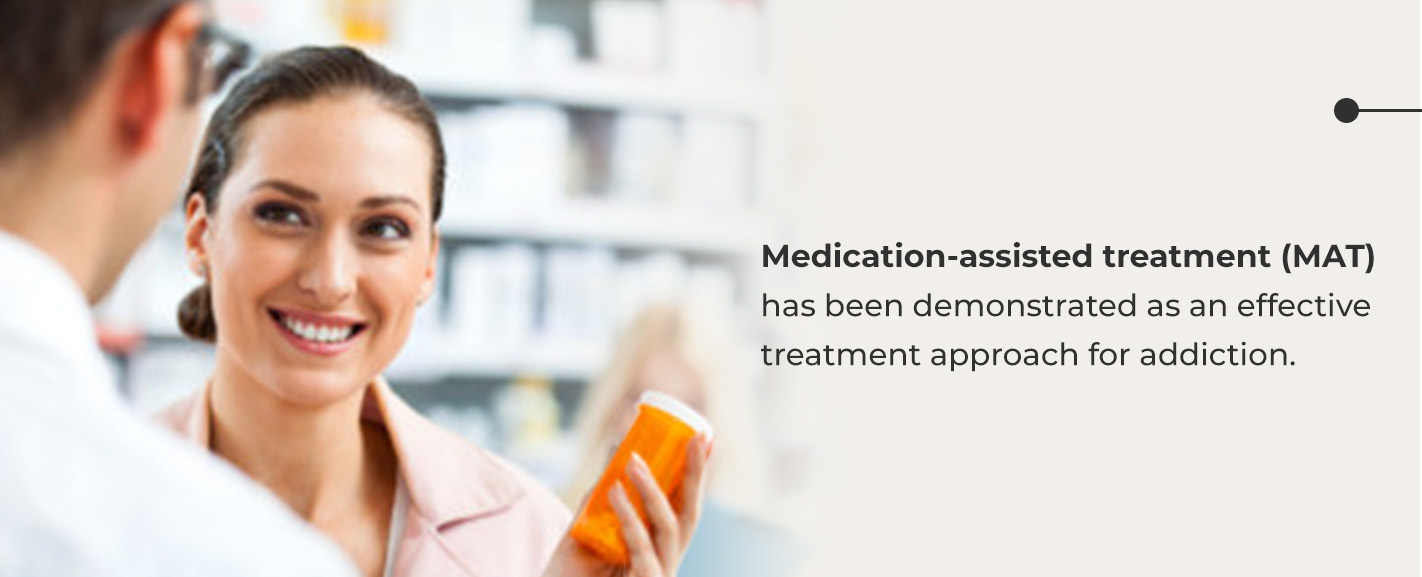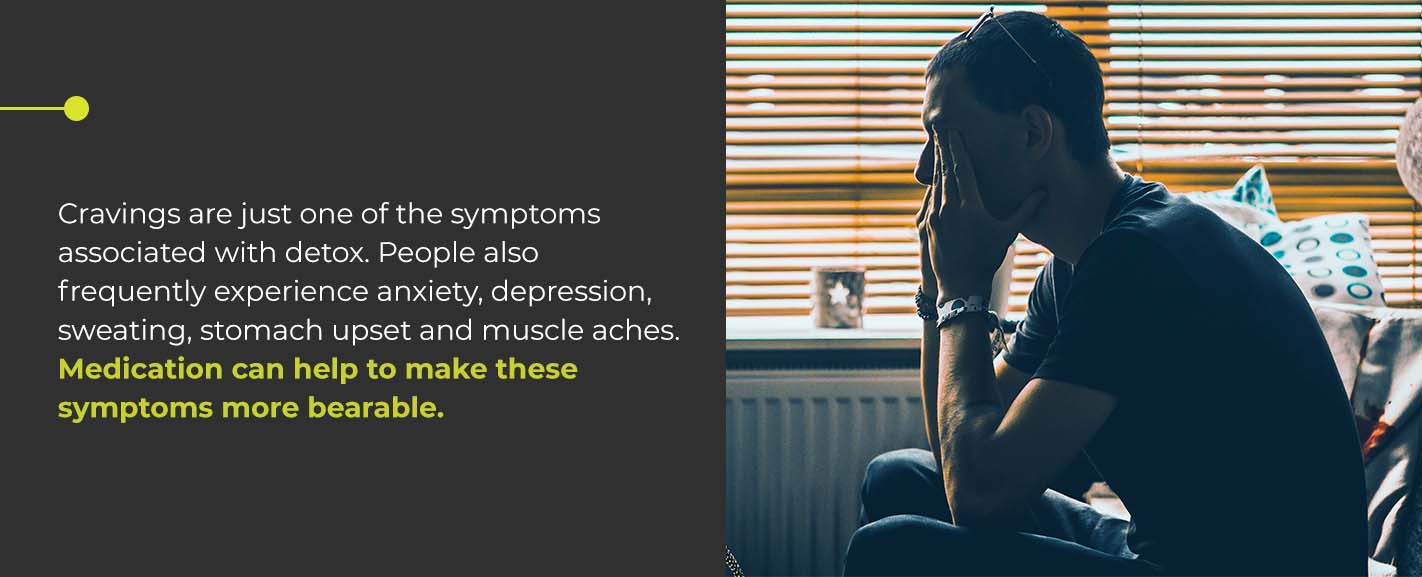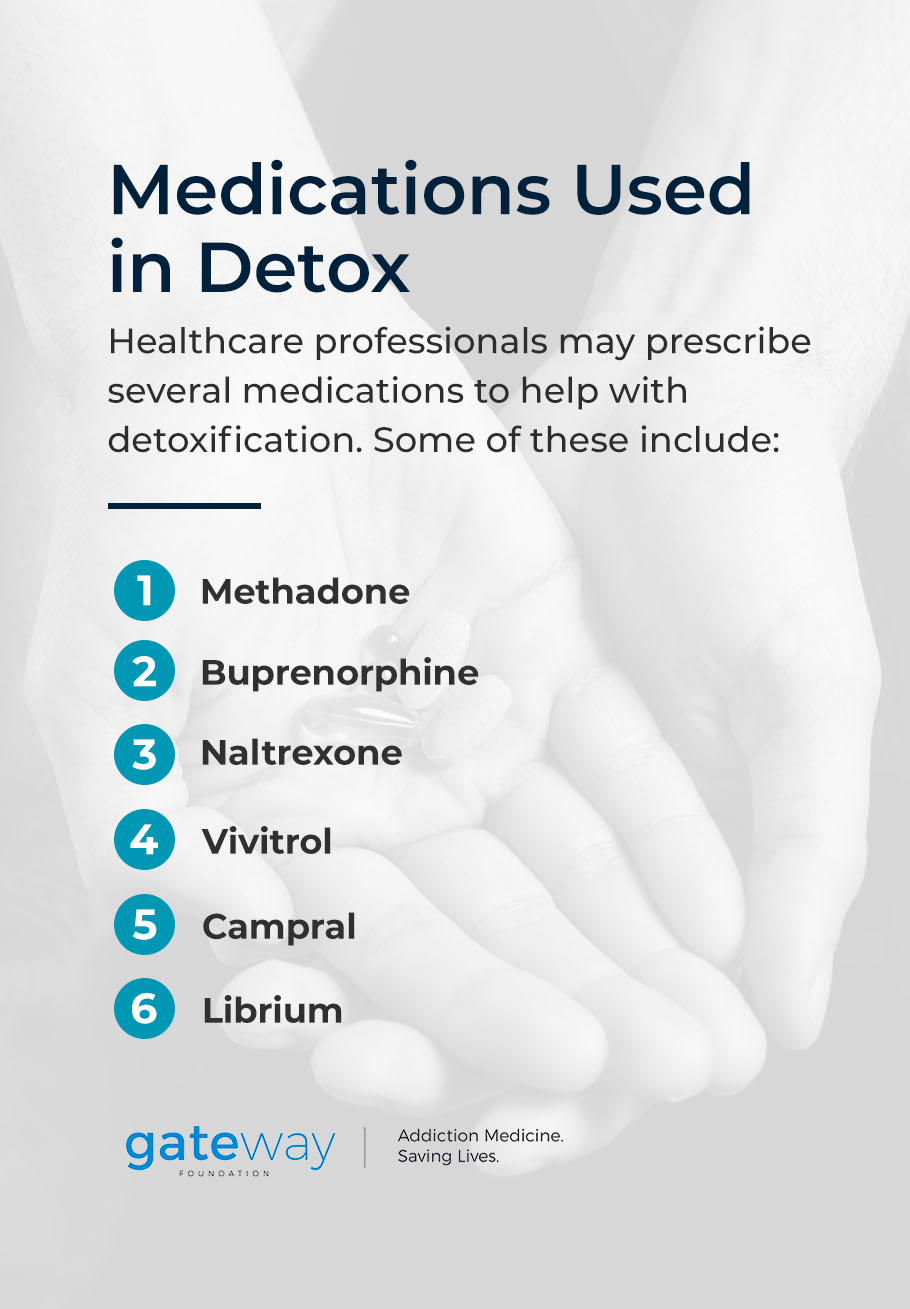- Jan 21
- Drug DetoxRecovery
Medical detoxification is an important first step in the process of treating addiction to alcohol and various types of drugs. Addictive substances are difficult to stop using. You might try to quit “cold turkey” only to experience painful, and oftentimes dangerous, withdrawal symptoms. Within hours of your last drink or last use of a drug, you can experience nausea, headaches, tremors and anxiety. More serious symptoms of withdrawal, such as seizures, are also possible.
Withdrawal can be a difficult process, but it can be done safely with medical supervision. Medically supervised facilities can help people manage the unpleasant symptoms that come at the beginning of addiction treatment with the help of medications. Learn why medication can play an important role in detox and what options medical professionals may opt to include in your treatment plan.
Why Medications Are Used During Detox
People may need to go through detox for a number of reasons, including drug abuse, alcohol addiction and addiction to prescription medications. Removing addictive substances from the body is the purpose of detox. While this does not mean the end of addiction treatment, it is an important first step. How can medication play a role in detox and the addiction treatment that follows?
Medication-assisted treatment (MAT) has been demonstrated as an effective treatment approach for addiction. MAT uses a combination of detox medications, cognitive behavioral therapy and counseling to help people address their addiction. Medication is an important part of this process because it can:
Reduce Cravings
Cravings are a significant part of what makes the cycle of addiction so difficult to break. You may want to stop drinking or drug use, but every time you do, you can be hit with intense physical and psychological cravings. While willpower is important, it is often not enough to overcome these cravings alone.
Certain medications may be used in your treatment plan to dampen these cravings. For example, there are specific medications, known as opioid agonists, which reduce the cravings associated with opioid withdrawal. There are other medications that specifically target the cravings associated with alcohol withdrawal. These medications are prescribed in an inpatient or outpatient treatment setting by medical professionals who oversee the dosage and usage.
While these medications may not entirely erase cravings, they can be a useful tool in making them more manageable, allowing you to focus more on recovery.
>Decrease the Other Effects of Withdrawal
Cravings are just one of the symptoms associated with detox. People also frequently experience anxiety, depression, sweating, stomach upset and muscle aches. Medication can help to make these symptoms more bearable. And in some cases, medication makes the process of detox much safer. The abrupt cessation of some addictive substances, like Xanax, can be dangerous. If you try to quit suddenly and without proper medical supervision, you could be at risk of side effects like seizures or even death.
The professional teams at addiction treatment centers can help you to gradually remove toxic substances from your body, using medication to slowly taper the amount of the substance in your system. The symptoms of withdrawal will not be as severe and the risk of dangerous side effects is much lower.
Lower the Risk of Relapse
Relapse is a common part of recovering from addiction. Your addiction can be triggered while you are trying your best to work your way toward sobriety. While relapse is frustrating, it is completely normal. Medication can reduce the risk of relapsing by helping people to better cope with the stressors that may trigger a relapse.
When combined with cognitive behavioral therapy, people can become more equipped to handle their triggers and move forward without relapsing. Therapy can also help patients to better adhere to their treatment regimen.
Medications Used in Detox
Healthcare professionals may prescribe several medications to help with detoxification. Some of these include:
Methadone
Methadone is an opioid agonist commonly used in the treatment of heroin and opioid addiction. Methadone is also prescribed as a pain medication. It can be habit-forming, like other opioids, but it is a long-acting opioid. This medication helps to blunt cravings in people addicted to opioids and minimize the symptoms of withdrawal. But, methadone does not produce the same pleasurable feelings or “high” as fast-acting opioids. Methadone is prescribed under a number of branded names, including Dolophine and Methadose.
Initially, methadone may make some people sleepy. It can take a few days for people to feel the full effects of treatment with methadone. Methadone can be taken as a tablet, dissolved in water or administered as a liquid. Your doctor will work with you to determine the optimal dosage and how often you will take the medication.
Breaking your addiction to fast-acting opioids, like heroin, oxycodone and fentanyl, is the ultimate goal of using methadone during treatment. How long you will use methadone will depend on your particular situation. Typically, you will be prescribed methadone to help you manage the immediate cravings and symptoms of withdrawal.
Over time, you will undergo other treatment, such as therapy and counseling, to help you move forward. A year of treatment with methadone is typical, but some people may require more time. Stopping treatment with an opioid agonist too soon can increase the risk of relapsing and overdose.
Note that, at Gateway Foundation, we don’t use methadone or prescribe it. Instead, we use medications such as Suboxone or Vivitrol.
Buprenorphine
Buprenorphine is often prescribed as part of a MAT treatment program for opioid addiction. This medication is an opioid partial agonist. It still activates the opioid receptors in the brain, but that reaction is much less powerful than the one caused by heroin or other addictive opioids. This medication can be prescribed in an outpatient or inpatient treatment setting. Buprenorphine has multiple branded names, including Probuphine and Subutex. Buprenorphine can also be administered as an extended-release injection, prescribed under the name Sublocade.
Buprenorphine is often prescribed as a sublingual tablet, meaning you will take it by allowing it to dissolve under your tongue. The medication might be prescribed on its own, or it might be prescribed with naloxone. The combination of the two medications goes by the branded names Suboxone and Zubsolv. Buprenorphine, alone or with naloxone, helps to manage the symptoms of withdrawal and lessen the cravings.
Before taking buprenorphine, it is important that you have not used opioids for 12 to 24 hours. If taken while opioids are still in the bloodstream, this medication may cause you to experience acute withdrawal symptoms. The timeline of treatment with buprenorphine will depend on the individual. As you move through treatment and make progress, your doctor may talk to you about adjusting the dosage of this medication.
Naltrexone
Naltrexone can be prescribed as a part of a MAT treatment program for alcohol use disorder or opioid use disorder. This medication is available in pill form or via injection. Naltrexone is an opioid antagonist, rather than an opioid agonist. Opioid antagonists actually block the effects of opioids. The medication attaches to the brain’s opioids receptors but does not activate these receptors like drugs such as heroin and oxycodone will. Brand names for naltrexone include ReVia, Vivitrol and Depade.
Naltrexone is prescribed to people who are further along in treatment. Taking naltrexone while taking opioids can result in the sudden onset of withdrawal symptoms. Naltrexone does not mitigate withdrawal symptoms. Rather, it helps to prevent people from taking opioids again. This medication decreases the desire to take the addictive drug and blocks the effect of the drug if you do take it.
Your doctor will likely prescribe you naltrexone in pill form. The drug can be taken daily, or it may be prescribed in higher doses every few days. Naltrexone is designed to help prevent relapse in people who are recovering from addiction. It is important that this medication not be taken with opioids. Your doctor may ask for a urine sample before prescribing this medication to confirm that there has been no recent opioid use.
Vivitrol
Vivitrol is a branded, injectable form of naltrexone. While naltrexone taken in pill form may require daily usage, Vivitrol can be injected once a month. This medication can be prescribed for people struggling with opioid addiction or alcohol addiction. It can help to reduce the cravings for opioids or alcohol. Like many other medications for opioid treatment, it is important that Vivitrol be taken several days after your last opioid use. Taking Vivitrol with opioids still in your system can trigger acute withdrawal symptoms.
Some people may prefer Vivitrol over the other forms of naltrexone because of its convenience. Vivitrol is taken as a single monthly shot, while naltrexone is taken in pill form daily. The Vivitrol injection must be administered by a healthcare professional, while pills may be prescribed as part of a regimen that can be done on your own.
Vivitrol, like other medications used to help people overcome opioid addiction, is typically prescribed along with other forms of treatment, like therapy and counseling. Your healthcare provider will talk to you about the risk of overdose if you take opioids while on Vivitrol. Vivitrol blocks the pleasurable effects of opioids, which means it will take more of the drugs to feel the same effects you did before. Trying to overcome the blocking effects of Vivitrol can be dangerous and lead to accidental overdose.
Campral
Campral (also known by the generic name acamprosate) is one of the detox medications for alcohol. This medication can be prescribed for someone who has recently quit drinking alcohol. Campral helps to adjust the brain’s chemical balance. The medication can also reduce the pleasurable feelings generated by drinking alcohol, thus decreasing the desire to drink. Typically, this medication is prescribed post-detox. It can be taken, in conjunction with therapy, to help prevent the desire to drink and to help lower the risk of relapse.
Campral is prescribed in pill form. The pills are delayed release, and your doctor will likely instruct you to take them at certain times throughout the day. It can take up to a week for the medication to build up in your system and take full effect. Campral also has an intravenous form.
Campral does not come with many side effects, and if it does, the side effects tend to be mild. The medication is not addictive, and it is often prescribed for a period of 12 months after you stop drinking.
Campral does not mitigate or treat the symptoms associated with alcohol withdrawal. Instead, this medication is prescribed to help people maintain sobriety. If you are struggling with addiction to other substances beyond alcohol, Campral is likely not the right fit.
Librium
Librium is among the outpatient alcohol detox medications your care provider may consider prescribing during your recovery from alcohol addiction. Librium is a benzodiazepine, which is a term for a group of medications typically prescribed to manage anxiety disorders. Librium (generic name chlordiazepoxide) can also be prescribed to help people manage the symptoms of alcohol withdrawal. The medication acts as a sedative to calm you.
After a long period of alcohol dependence, the brain begins to behave differently. It becomes used to the depressive effects of alcohol. The sudden cessation of drinking results in a change in brain chemistry. Your central nervous system struggles to function normally without alcohol. This event causes the symptoms of alcohol withdrawal, including tremors, anxiety, nausea, vomiting, sweating and insomnia. In severe cases, alcohol withdrawal can cause seizures and hallucinations.
Librium helps to manage the symptoms of withdrawal by regulating how the neurotransmitters in your brain communicate during withdrawal. This medication is typically prescribed in pill form. Your doctor will determine what dosage makes the most sense for you. As a benzodiazepine, Librium is potentially habit-forming.
When used for alcohol withdrawal, this benzodiazepine detox medication is typically only prescribed for a few days or up to a week while someone is experiencing acute symptoms. As you move through the initial detox process, your doctor may taper your dose down. It is important to carefully follow your doctor’s instructions while taking this medication to reduce the risk of addiction to Librium.
Once you go through detox, your doctor will likely discuss the next phase of your treatment, which may include different medications as well as therapy and counseling.
Getting Help at Gateway Foundation
Detox is a major obstacle for many people struggling with addiction to drugs or alcohol. The effects of withdrawal are scary, especially if you have experienced withdrawal and relapse. It takes time and dedication to detox medications from the body. But, you do not have to go through alcohol or drug detoxification alone.
At Gateway Foundation, we offer MAT to our patients. We understand that everyone is different, and that means treatment should be designed to fit your needs. We will make a plan together for how to approach detox, what medications make sense and how you will move forward with the treatment you need to find long-lasting sobriety.
Get in touch today to learn more about how we can help and how you can start to move forward with your life.






